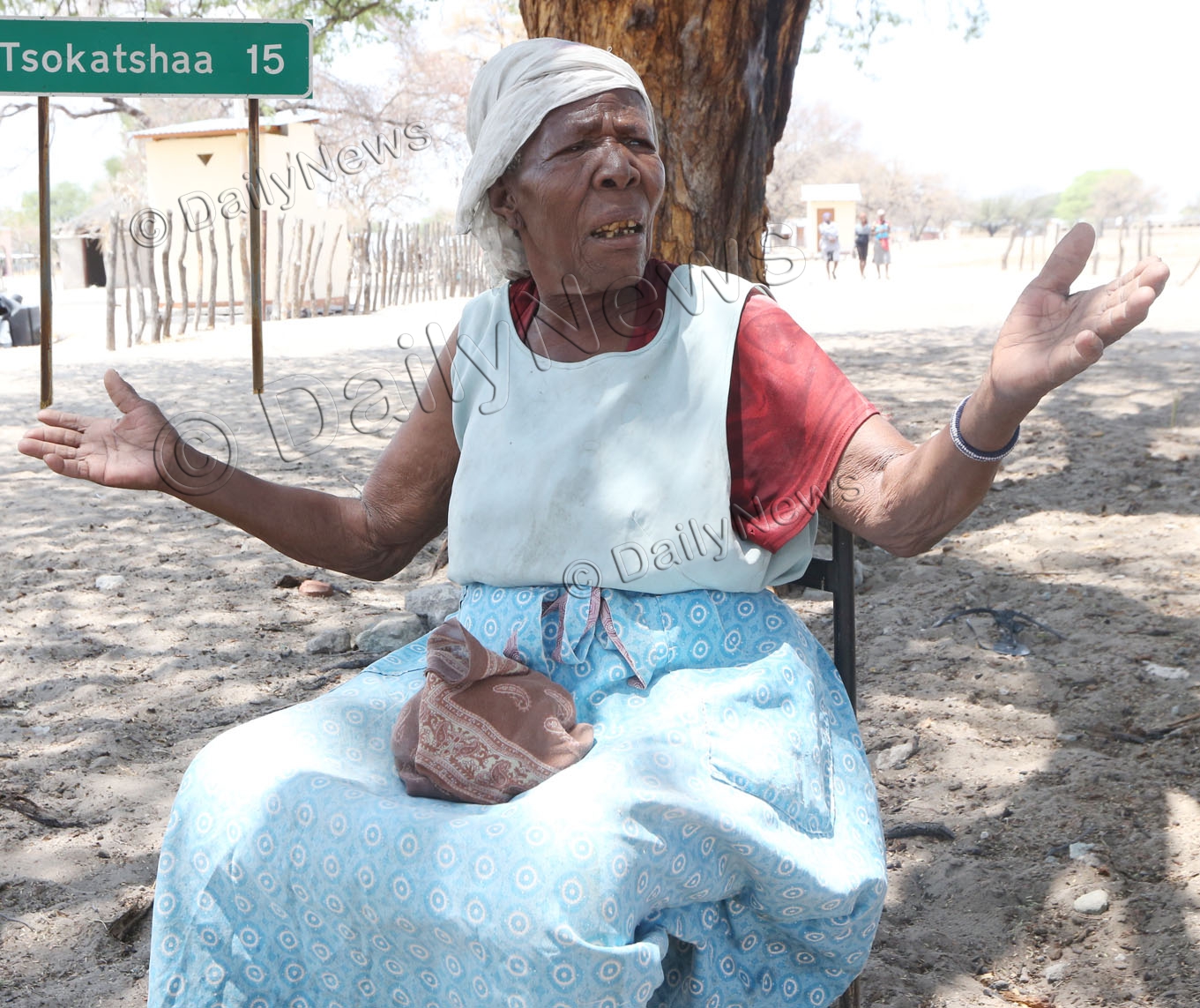Makgadikgadi Pans Origin of humankind
07 Nov 2019
In the sizzling summer heat wave of November, a nonagenarian who has seen better days is relaxing under a huge shade of a lush green tree to escape the hot summer day.
She is at peace with her surroundings, whose eerie silence is punctuated by the musicality of humming birds perched atop the tree.
Their lullabies are a much needed soothing relief and therapy in rural Tsokatshaa, where after spending a better part of the morning doing domestic chores for her age, the women rests.
Closer to the big tree are small run down Basarwa huts that have also seen better days and are in need of renewal, especially as the thatch begins to give in to the harsh weather elements.
The neighbourhood is typically thatched roundavels, with fewer houses built with modern materials.
It is a little more than a week since news broke out that the cradle of mankind is located somewhere in the Makgadikgadi pans, and our expedition here is to check if the news has filtered into this hamlet and what the elderly think about such a huge announcement.
Born in 1929, Ms Ware Konongwe, who is of Xhaicwa-Sarwa extraction, has not gotten the news about the origins of modern human population being the Makgadikgadi area.
She explains that her sight is fast fading due to old age and mixes Setswana and Sesarwa during the interview and the intervention of her youngest daughter comes in handy.
Even though she has not been made aware of the breaking news, she explained that she is not surprised.
“Mosarwa ke ene motho wa ntlha mo lefatsheng,” she pointed out. Ms Konongwe explained that her fore bearers settled in Tsokatshaa due to zaotsha (heavy rains) which fell in the flood plains of the Makgadikgadi Pans where they used to live.
This, she opines, was passed by word of mouth by generations and so does not remember when this happened.
She also noted that the area around the Makgadikgadi used to be imbued with wild berries and wildlife, which was the staple diet of the Basarwa.
Consequently, she mentioned that the abundance of water would have attracted humans to settle in the area.
The idea of the origins of modern humans is a topical and controversial one despite the fact that it is acknowledged that humans originated in Africa some 200 000 years ago.
Before the recent announcement, it had always been believed through archeological and paleontological research that humans originated in the East African Rift Valley region.
However, current research findings have used a different methodology which used mitochondrial DNA to trace the origins of mankind.
This is the first time that this method has been used and they have been murmurs of disapproval from some in the scientific community.
In a ground breaking study researchers have argued that Southern Africa is home to contemporary populations that represent the earliest branch of human genetic phylogeny.
The study focused on contemporary Southern Africans and show the geographical isolation of Khoe San descendants south of the Zambezi River.
In seeking a more specific location of the homeland for all modern humans, the study has narrowed in on northern Botswana.
There, the area south of the Greater Zambezi River Basin, which includes northern Botswana and parts of Namibia and Zimbabwe, the ancestors of Homo sapiens began 200 000 years ago.
The research has been published in the journal, Nature and suggest that the ancestors of modern humans thrived for 70 000 years in this region before climate change led them to migrate out of Africa and eventually span the globe.
While previously some fossil evidence had suggested eastern Africa, DNA evidence has pointed to Southern Africa.
“It has been clear for some time that anatomically modern humans appeared in Africa roughly 200 000 years ago.
What has been long debated is the exact location of this emergence and subsequent dispersal of our earliest ancestors,” said Vanessa Hayes, lead study author at the Garvan Institute of Medical Research and the University of Sydney.
To come to this conclusion, researchers used DNA to piece together the past. “Mitochondrial DNA acts like a time capsule of our ancestral mothers, accumulating changes slowly over generations,” Hayes said.
“Comparing the complete DNA code, or mitogenome, from different individuals provides information on how closely they are related.”
The research resulted in the creation of a single region as an origin point, the Makgadikgadi-Okavango paleo-wetland in Southern Africa.
The researchers then studied the region itself, analysing fossil and geological record.
They discovered that it once held the largest lake system in Africa, twice the area of Lake Victoria. About 200 000 years ago, the researchers noted that the massive lake began to break apart.
The lake according to the study, would have been one of the most productive ecosystems for sustaining life.
The wetlands created a stable environment, providing everything ancient humans needed to survive and the environment was sustainable for 70 000 years before things began to change again, according to the study.
Ancestors, the study noted, began to migrate out of the homeland between 130 000 and 110 000 years ago and the first migrants ventured northeast, followed by a second wave of migrants who travelled southwest.
A third of the population remained in the homeland until today.
In contrast to the northeasterly migrants, the southwesterly explorers appear to flourish, experiencing steady population growth, according to Hayes.
The study further explained that now the region once filled with wetlands is a desert, but the blood of the people who still live there tells an ancient story.
According to Hayes, these first migrants left behind a homeland population which eventually adapted to the drying lands.
Maternal descendants of the homeland population can be found in the greater Kalahari region today, the study noted. ENDS
Source : BOPA
Author : Puso Kedidimetse
Location : TSOKATSHAA
Event : Feature
Date : 07 Nov 2019







